Previously, practically every prescription, ointment, and serum was tested and proved on lab-created cells and creatures. However, things have changed, and more pharmaceutical studies have been or are being conducted on humans than most people are willing to accept. Serial guinea pigging is becoming a more enticing “career choice” for the poor, due to the fact that a frighteningly large fraction of the world’s population is prepared to go to extremes for fame and wealth, and medical businesses are willing to pay large sums to experiment on our bodies.
While I am absolutely opposed to the idea, it is understandable why more people are becoming involved in the lab rat fad, given that professionals can make upwards of $ 50,000 per year, not to mention free food, accommodation, and everything else it takes to tempt a guinea pig.
Films depicting ludicrous acts of science done on innocent victims or professors willing to risk the rashness of their study cut a bit too close to the bone in the real world, making for an unpleasant experience. So, in order to keep with the subject, we’ll be delving into the horror genre’s medically immoral realm today.
Re-animator (1985)
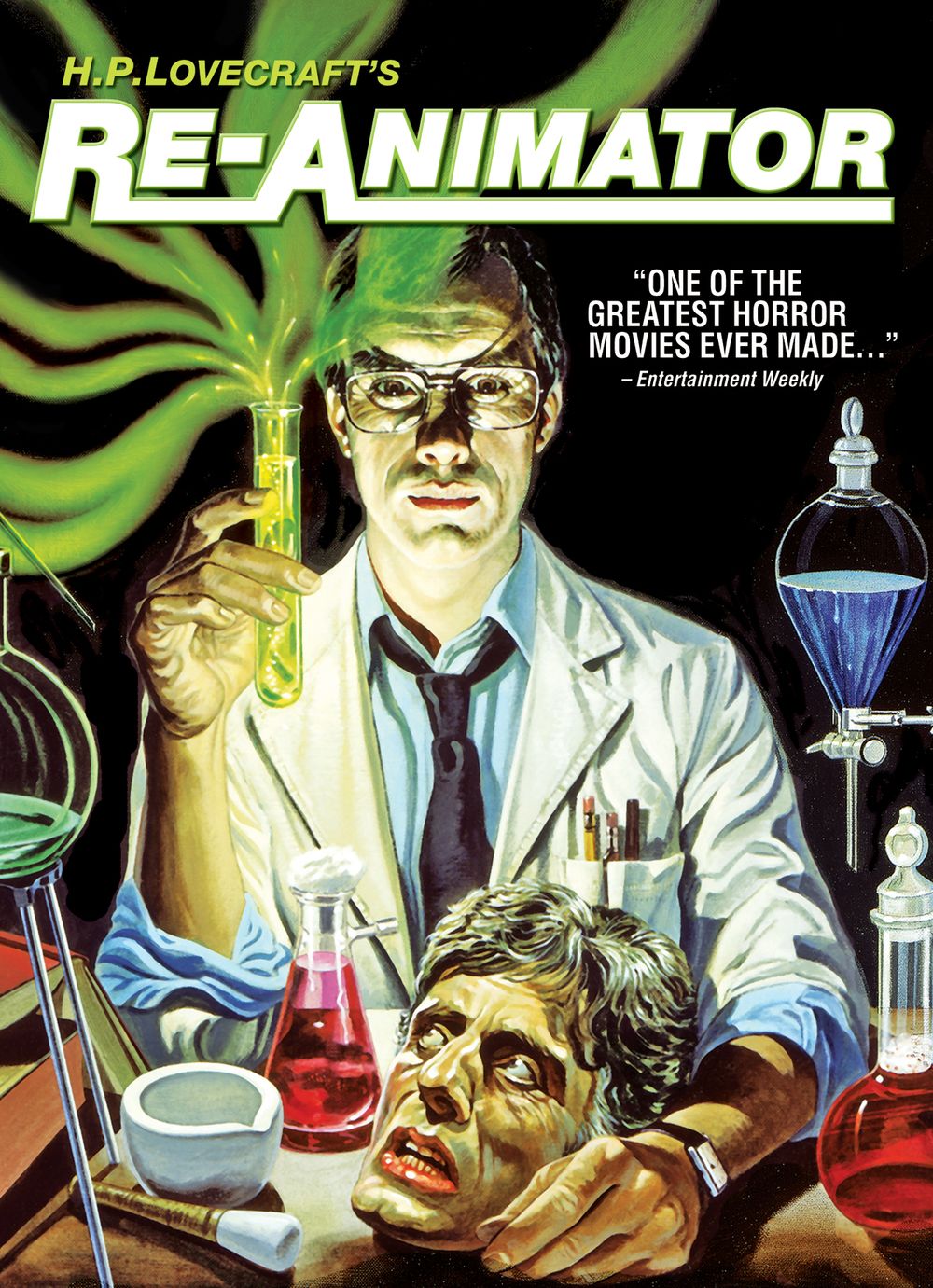
A medical student returns from Austria after working on regeneration research with a well-known doctor who died under suspicious circumstances. He enrols at Miskatonic University, where he has a major disagreement with his professor on the subject of death, and eventually enlists the help of his roommate to continue his studies in raising the dead.
Stuart Gordon’s “Re-Animator” is a joy like that; a gruesome horror film that finds a rhythm and style that makes it work in a contorted, quirky way. It’s fueled by a conflict between the director’s ambition to make a decent film and his realization that few films about crazy scientists and decomposing bodies could be excellent.
So, returning to our story, Dan Cain (Bruce Abbott) is an aspiring doctor who is forced to share a room with Herbert West, a fellow medical student. West is tough to get along with; he has the social skills of a skunk and is a zealous follower of pure science. West doesn’t waste any time confronting chief brain researcher, Dr. Hill, and the two get along like oil and water.
Cain was content with his betrothed Megan and his black cat, Rufus, until West disrupts his pet ownership, studies, and girlfriend in that order. It’s not worth spoiling what happens next, but suffice it to say that Herbert West is the most irresponsible crazy scientist to ever scream “It’s Alive!” Everyone he kills mistakenly in previous experiments just becomes a new body for the next! The final part of the film is a tumultuous thrilling joy ridewith the characters.
“Re-Animator” is an example of a film with a positive tone. The rumour around the film is that it’s a hysterical Evil Dead sequel, and that’s exactly what it is. It’s also shaping out to be a tight, stressful picture with bizarre moments.
However, a slew films in the category of “how many sick things can we do with human body parts?” have since eclipsed it. As previously stated, expect this to be a good example of Lovecraft here, as it’s a loose adaptation of what was widely regarded, even by Lovecraft himself, as one of his more successful works.
The Human Centipede(2009)
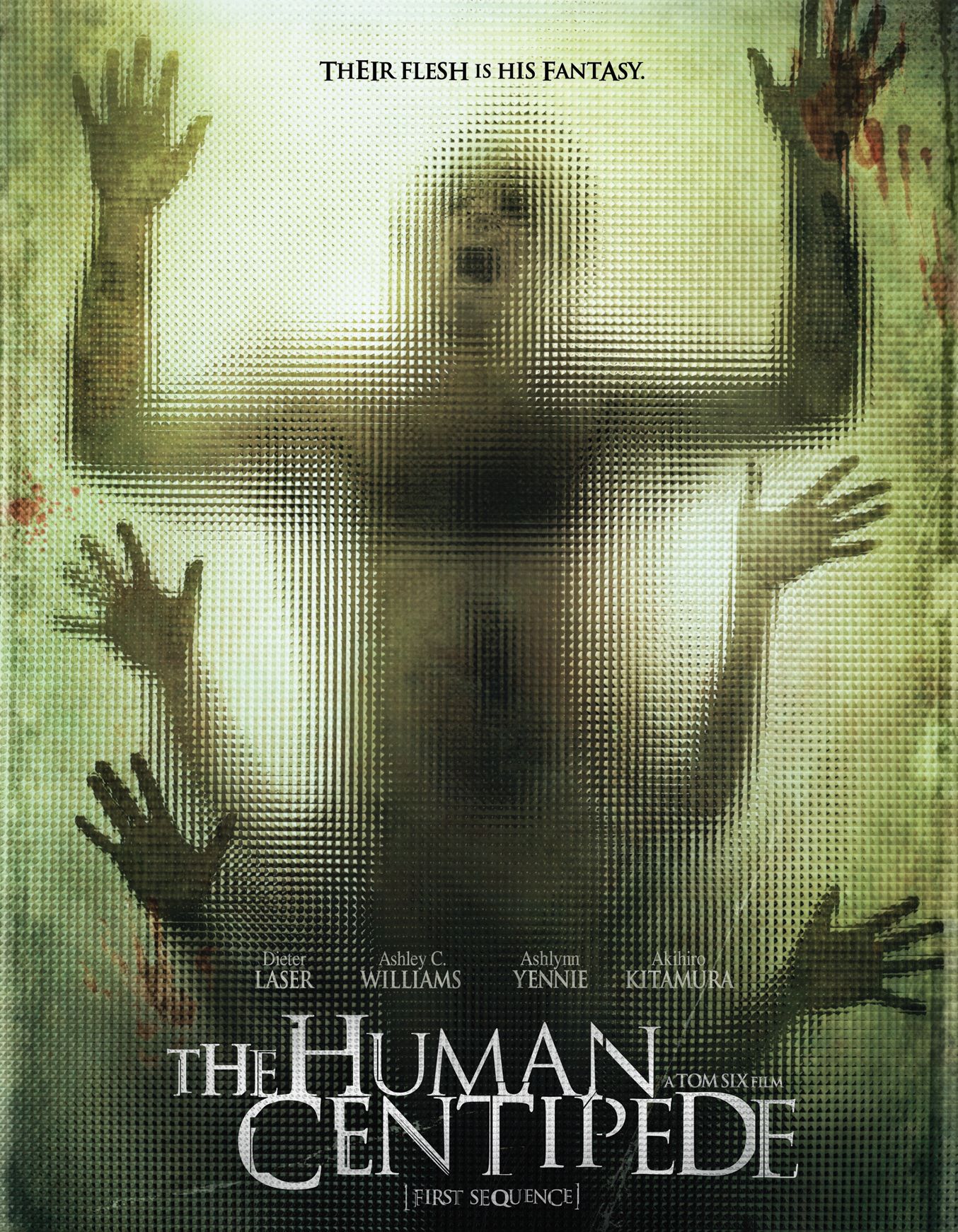
“The Human Centipede: The First Sequence,” directed by Dutch director Tom Six and released in 2009, is a “disturbing” film that has found a mass audience. This film is frequently referenced in the horror genre space, for countless reasons. Everyone has either seen it or is terrified to see it. Here’s a rundown in case you’ve never heard of it.
In this video, two American holidaymakers become stuck in the German countryside. Their automobile has a flat tyre, which is a common cliché. They walk a short distance to the adjacent house of surgeon Josef Heiter. The girls are sedated and awaken in a makeshift operating room, where they are informed of their fate.
The surgeon specializes in separating conjoined twins, but he’s also interested in making one. He wants to create a “human centipede” with three people linked from the rectum to the mouth. As the film progresses, we observe the “creation” adapting to its new lifestyle.
This film is upsetting, but not in the ways that we generally identify with scary movies. There isn’t a lot of gore, the monster isn’t sexualized, and none of the notions are really appealing to us. The unpleasant component sneaks in since it accurately describes the narrative and causes your mind to wander. The idea is so weird that it may be considered its own personal hell.
You put yourself in the shoes of the characters, which makes you think about things. For example, would you rather be the centipede’s front, center, or back? Even if the doctor is a charming character, this form of bodily horror is quite revolting; so much so that it makes you intrigued.
Dieter Laser, could not have been a better option for the mad surgeon. He was a method actor who stayed in character when he was with the rest of the team. His mannerisms, as well as his general “look,” seemed tailor-made for this part. He reappeared in the franchise’s third installment.
It’s a fantastic flick. It’s a well-written and effective piece. The centipede’s frontman, Akihiro Kitamura, is a tireless chatterbox who isn’t afraid to attempt everything to evade his fate.
We don’t meet this man until he undergoes surgery, but we care intensely about him throughout the movie. He is the creature’s literal “voice.” For added effect, the director Tom Six purposely constructed a language barrier between the doctor and the front of the centipede, and it worked beautifully.
Flatliners (1990)
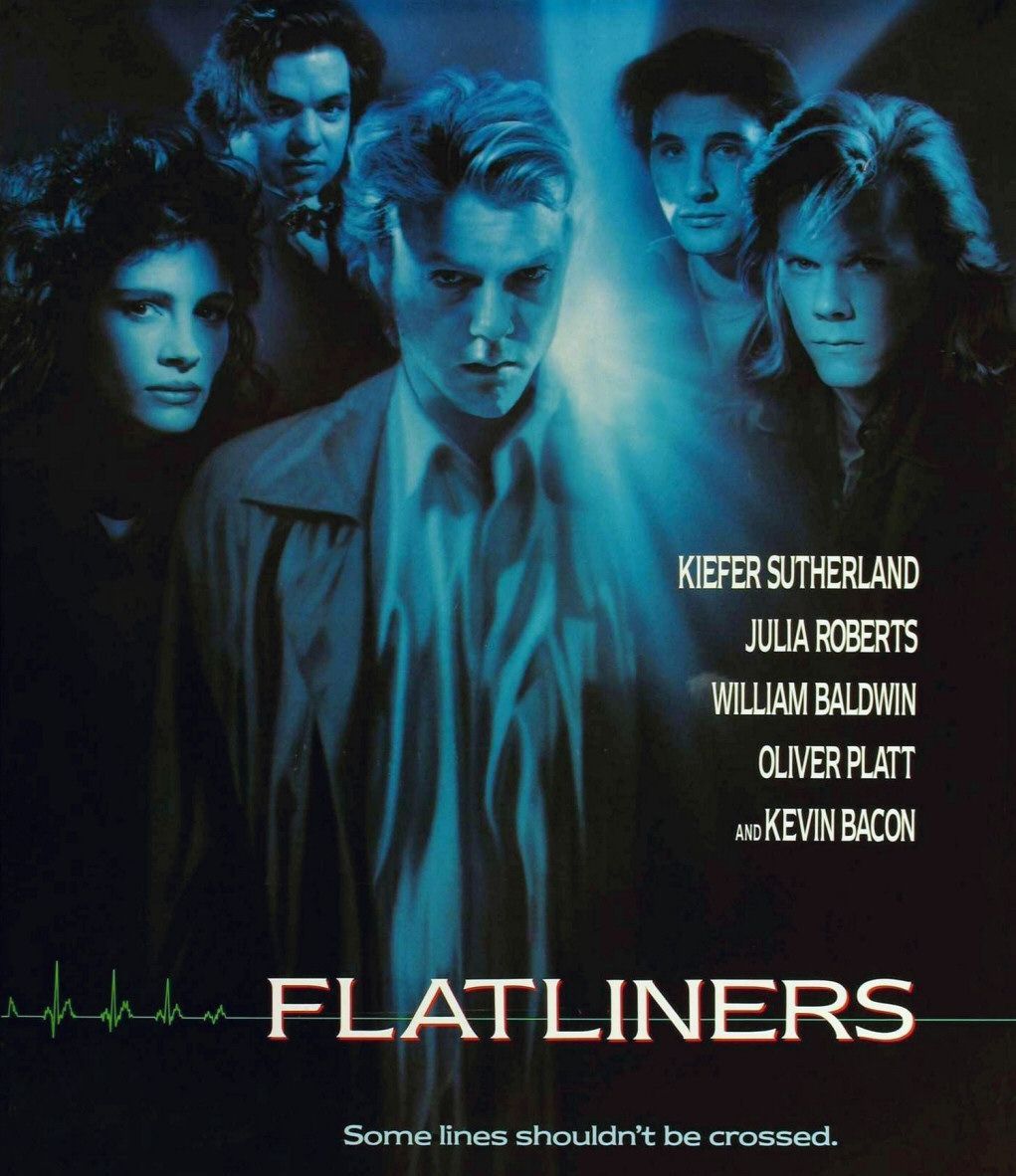
Kevin Bacon, Julia Roberts, and Kiefer Sutherland feature as death-defying medical students who perfect a nearly fatal mix of pharmaceuticals. The goose-bump inducing body temperatures sends them into a temporary brain-dead state before being brought back to life to tell the tale, in director Joel Schumacher’s meta medical shocker.
Being the investigative medics that they are, their instincts get the better of them, with the team steadily increasing the time spent between the living and the dead in order to knock on death’s door a little harder.
The longer they are unconscious, the greater the sense of guilt they feel, and it creates a satisfyingly quirky and interesting psychological horror by exposing the protagonists deep, dark faults to the fullest.
“Flatliners” is a film that has been executed really well. Its appeal is based on star power and brilliance on the surface, both of which are plentiful. It follows a group of self-assured medical students as they attempt to explore the boundaries of the afterlife while also putting their own overconfident abilities as would-be doctors to the test. The students produce their own flatlines on a cardiac monitor by inducing death, using medicines.
The others revive the willing participant after a minute or so (a duration that increases with each individual who wants to undertake the experiment), much to the delight of the viewers. The suspense scarcely seems worth getting excited about when one or two people return without much effort.
Fortunately,the director injects humor into the otherwise somber subject, courtesy of Steckle, a realist figure who narrates his inner monologue on a tape recorder. Of course, each of them discovers that investigating death has repercussions, as they are tortured by past traumas and unconscious guilt until their karmic crimes are resolved.
The performances are fantastic for the intended audience of teens and college students since they all do an outstanding job in their roles. The film’s music is unnerving and lingers in your mind for a long time. “Flatliners” had the same warm reaction as many of Joel Schumacher’s other films when it first came out, but it now has a cult following and is adored by many in the horror community. In movies, the word “flatliners” has also become a big pop-culture staple.
The Skin I Live In (2009)
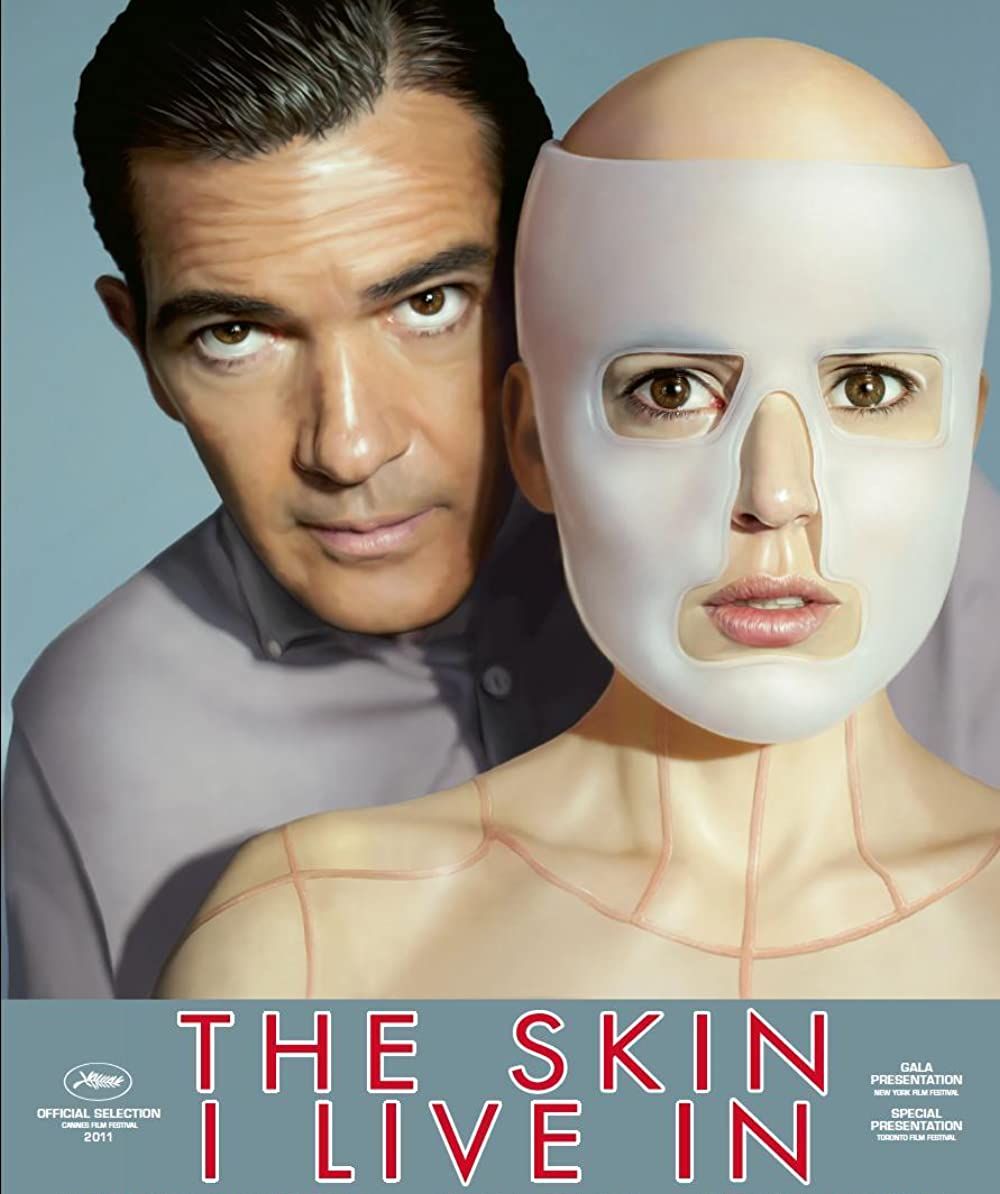
Obsession, sexual identity, betrayal, disorientation, secrets, gender ambiguity, and death are all hallmarks of Pedro Almodóvar’s work, and when combined with his forays into new genres such as science fiction and horror, the result is a sophisticated melodramatic classic with a vengeful heart, such as “The Skin I Live In.”
The heart-pounding speed of the narrative and the earnestly detailed stories of the characters lead to the film’s riddle progressively being solved, inspired by Fritz Lang’s thrillers. The audience pieces together everything that happened before, everything that is happening now, and everything that motivates the characters with each line and motion.
Robert Ledgard (Antonio Banderas) is a cosmetic surgeon who is working on “GAL,” a long-lasting artificial skin that is resistant to bug bites and burns. At a medical symposium, he quietly discloses to a colleague that he has not only been testing mice but has also been doing unlawful genetic experiments on people.
After this, he is barred from conducting any further study. Despite being outlawed, Ledgard continues his work with Marilla, his faithful servant, and Vera, his experimental subject. Vera is imprisoned in a room with a television, hand-knit dolls, yoga equipment, surveillance cameras, and a wall covered in her calligraphy.
Thanks to Almodóvar’s frequent collaborators, the film’s design, clothes, and colours are exquisite and uniquely artistic, combined with the climax soundtrack to produce an intense, clinically frigid mood that is uncommon yet suitable.
It premiered at the 64th Cannes Film Festival and won the 65th BAFTA Award for Best Film Not in the English Language. It was also nominated for 16 Goya Awards and the Golden Globe Award for Best Foreign Language Film. The origin story behind the doctor’s skin obsession (which we won’t reveal here) demonstrates that he is capable of anything.
Vera, on the other hand, isn’t just a helpless damsel in distress; the act that prompted Ledgard to use her as a guinea pig nearly explains his insane behavior. Almodóvar handles this subject through a variety of directions, at times experimenting with horror parody and at other times just increasing the suspense. Definitely earns a spot in our list.
The Void (2016)
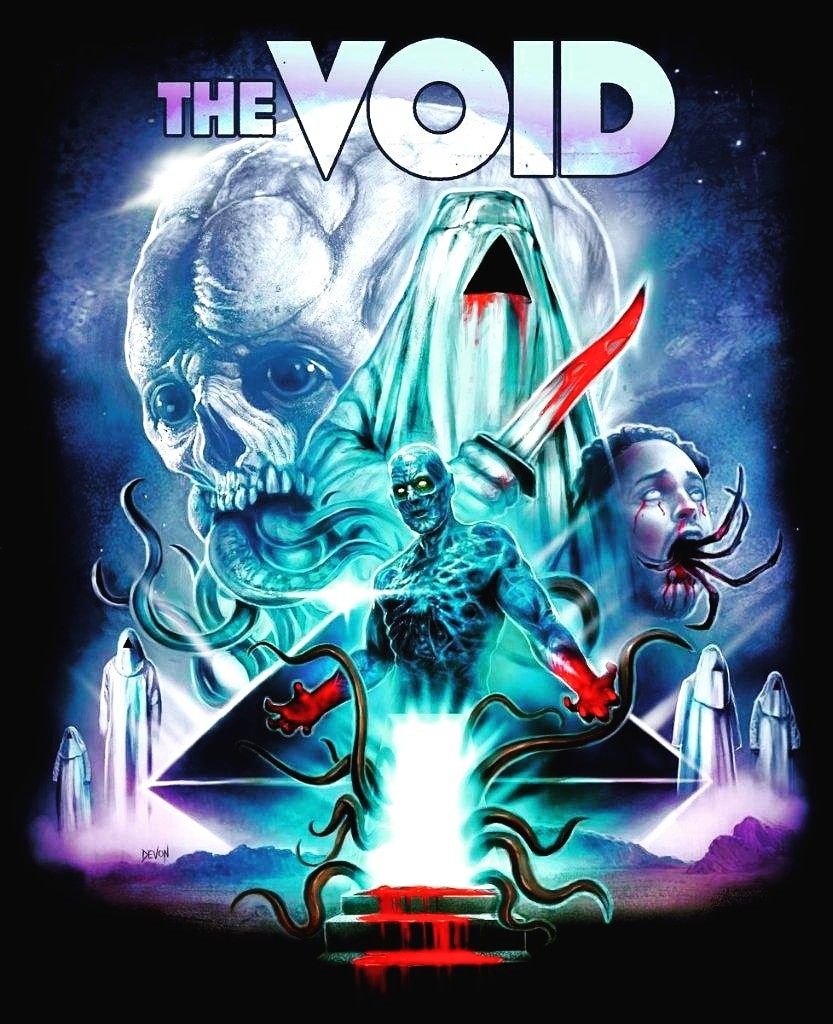
“The Void” keeps its plot of a frantic night of grisly peril in a remote hospital basic, but that’s not to imply the situation created by Canadian directors Jeremy Gillespie and Steven Kostanski is straightforward. Indeed, after a promising start, this ambitious and loaded project breaks down into a convoluted sci-fi mystical horror mashup that only gets more perplexing as it expands its psychological range.
In the first scene, two guys chase a pair of scared youngsters out of an isolated home. The girl never makes it across the lawn, as the latter couple kills her in a horrible and fiery manner. The injured child is able to retreat into the adjacent woods. Local constable Dan Carter discovers him by the side of the road, initially thinking James is just a drunk kid, but soon realizes he needed immediate medical assistance.
Unfortunately, the nearest hospital, March County Hospital, is barely open, with only a minimum workforce setting things up in preparation for a move to a new building, following a devastating fire. There are a few nurses and a few patients, including a nearly-due pregnant woman, in addition to senior staffer Dr. Powell.
Things build so rapidly and successfully in this early stage that “The Void” is not only entertaining, but also has the excitement of an open-ended movie. Fortunately for us, as the characters delve deeper into the hospital’s depths, the direction it inevitably takes is beyond anyone’s imagination. Dr. Powell has been “challenging God,” as well as death and nature, through horrifying “experiments” that have opened a passage into another world, they learn.
“The Void” weaves its overall storey into a seamless whole, while simultaneously offering far too many connecting connections for our little and outmatched band of refugees to be false. On top of this, you find yourself cheering for them to succeed, with Poole offering a pleasant portrayal of a mild-mannered cop who must rise to a highly unusual challenge and the rest of the cast, doing just enough to make you feel for their struggle.
The film is consistent, and does a good job in sincerity, with the cast and crew eager to explore a world based on rather than emulating those found in 1980s genre films. A hazy ending sequence adds to the idea that the filmmakers are attempting to construct something greater than their imaginations can properly convey. This is definitely a must watch.
Pathology (2008)
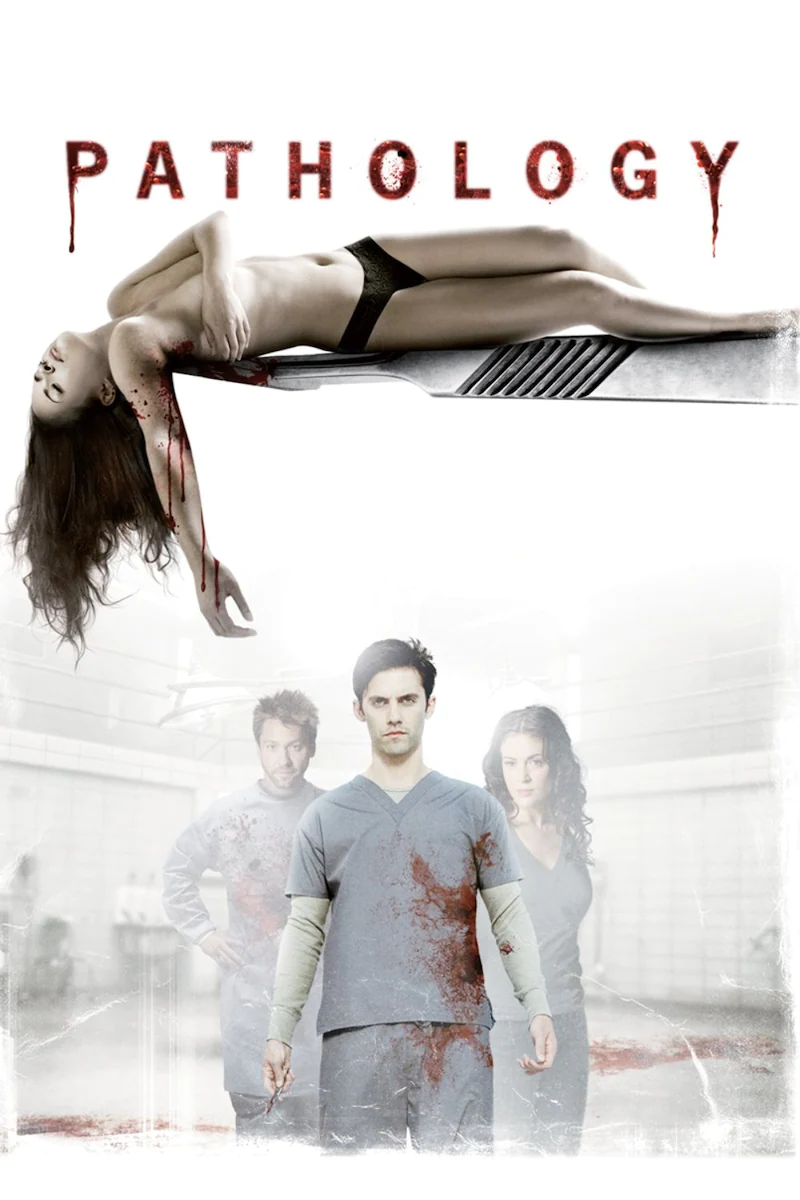
Doctors study the distortion and degradation of the body in unusual ways, such as via violence, poisons, insanity, and other factors, in order to determine the cause of death. As a result, they are specialists in all forms of foul play evidence, and the best in the field can uncover any type of murder, including ones that go undiscovered.
The film “Pathology” opens with Ted (Milo Ventimiglia) and Gwen Williamson (Alyssa Milano), an engaged couple, waking up on the morning of his residency at one of the most prestigious Pathology programmes. This should be a simple task for him to perform as the top student in his Harvard class. Dr. Jake Gallo is invited to join in an undiscovered game that takes place in the unused chambers beneath the hospital, and he finds that competition and almost jealous wrath emerges when he meets the rest of his interns.
Dr. Grey is shocked by the concept and finds it difficult to accept, yet he is compelled to play the game. He disappears in the macabre game of “guess the cause of death,” in which each intern has a turn bringing a body to the table. The aim of the game is to figure out how the intern killed the victim.
Step by step, they inspect the body, piece it together, and come up with a thorough theory using their coroner skills. As he delves deeper into this dark world, he spirals out of control and risks everything. With a threat of trying to get out of the game lurking around every turn, it all comes down to a medical knowledge showdown between Dr. Grey and Dr. Gallo as the predicted, yet unexpected, finale unfolds.
“Pathology” contains a lot of great conversation starters, such voyeuristic obsessions and breaching the fourth wall. The last fifteen minutes of the mall, though, are the most difficult. It starts with a really rewarding moment that I won’t reveal here, except to say that it felt both inevitable and unexpected; it formed an excellent ethically ambiguous conclusion to the entire film.
Consequently, the film continues to leap forward at a good pace, eventually arriving at a different morally ambiguous conclusion that is eye opening. There is a striking chemistry between most of the characters, in a very standoffish sense as can be seen, and it keeps things spicy and intense for the most part of the movie, with Ventimiglia giving a decent and genuine performance alongside Alyssa Milano.
Turistas (2006)
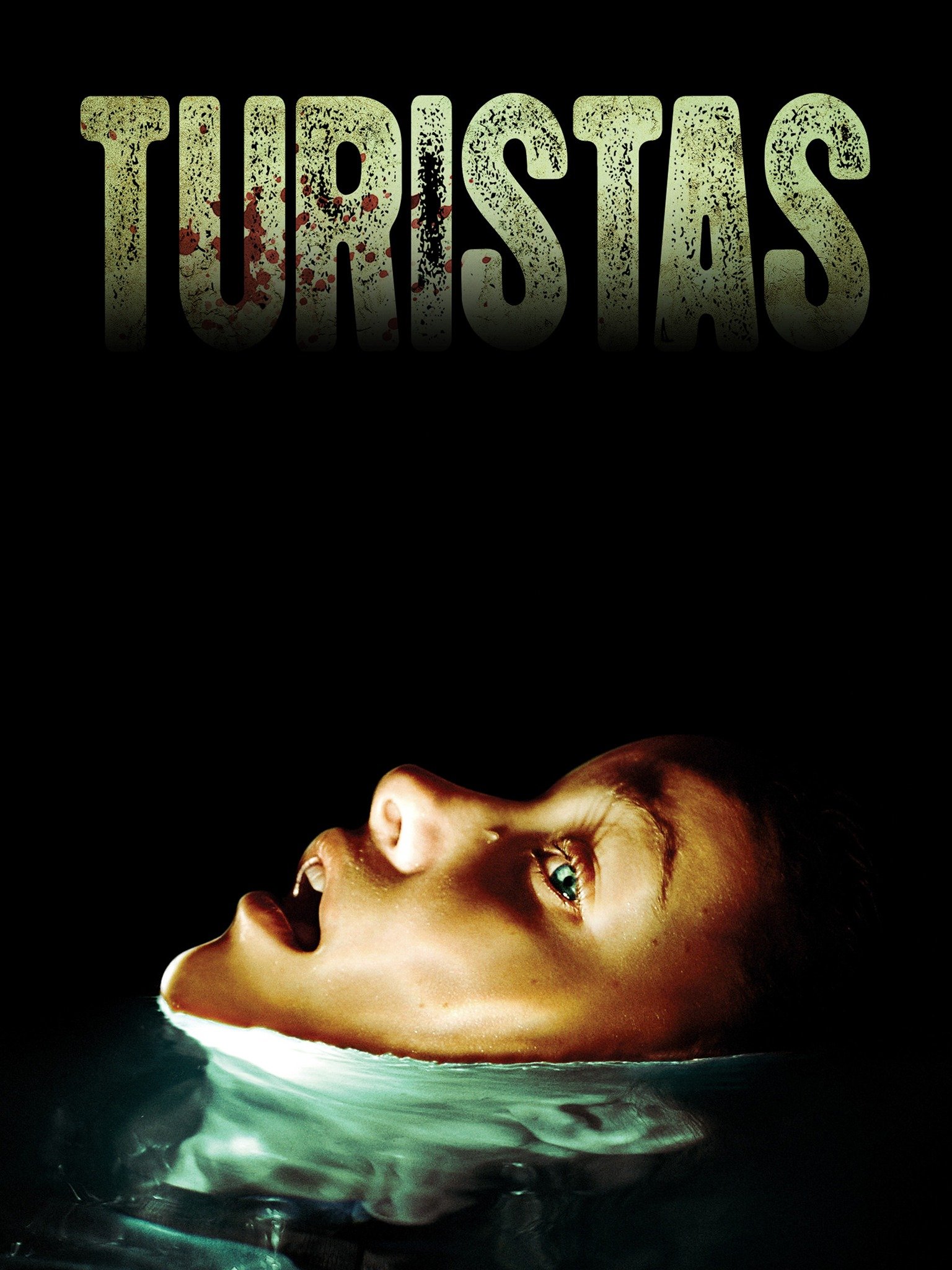
“Turistas” starts out as a respectable little horror movie before devolving into a convoluted storyline in the last 30 minutes. There’s potential for suspense here, and it works well since building tension when the viewer isn’t clear what’s going on is tough. When it comes to creating an ambiance, darkness and rain are excellent, and when it comes to filming action sequences, they’re terrific.
It doesn’t take long for it to become impossible to see who’s chasing whom and who’s ready to get hit in the face. Everything becomes evident in the end, but the journey to get there is long, dark, damp, and a hell of a ride.
When they are drugged and robbed, this imagined paradise turns into something else. They wake up half-naked and must journey for ten hours through the woods to reach a safe house. What they don’t realize is that they’re being lured into a trap by a deranged doctor with a vendetta against organ harvesting.
This film is frequently likened to “Hostel”(2005) and “Saw”(2004), and the audience expects the same level of gore. “Turistas” has a lot more gore and, if anything, a more gripping narrative. All the characters have been developed adequately throughout the movie. A good portion of them is likeable, which is sometimes not the case in a teenager dominant cast.
Everything is well-established, atleast on the surface of it all, and itdoesn’t fall prey to cliches along the way, thereby making it more than a generic flick at best. With a well-lit finale, “Turistas” achieves almost everything a horror movie audience anticipates.
Stockwell crosses the line between employing darkness to build a tone and having it result in the obscuring of everything by going for a realistic look, and he comes out on the right side of it. Everything just clicks together when thrill takes precedence over suspense. Respect for the audience necessitates a certain level of lucidity, particularly near the climax, which Stockwell delivers.
American Mary (2012)

The story of Mary Mason (Katharine Isabelle), a bright young medical student who is suffering financially and barely surviving the pressures of medical school, is told in the film “American Mary.” Out of desperation, she applies for a job at a strip club, which takes an unexpected turn when she ends up performing emergency surgery during the job interview.
She takes on various illegal surgical odd jobs to pay the expenses after realizing the rich opportunities. She leaves the conventional medical field behind after being rejected by the medical establishment and falling victim to a horrible rape incident. The film follows her journey into the shadowy realm of severe body alteration, where she excels at fulfilling the bizarre body image desires of her clients.
Mary’s foray into the world of illegal surgery and bodily alteration has been described as a “descent”. This isn’t always the case. As the young woman takes on more unusual clients, she develops an affection for a strange cast of characters, including a Betty Boop wannabe and Ruby Realgirl, a woman who wants to have all traces of her sexuality removed from her body. Initially, Mary is critical of these individuals, even repulsed by them. However, when she gets to know them as individuals, she develops feelings for them.
This film benefits from what may be described as a “woman’s touch” throughout. The protagonist’s viewpoint in the male-dominated profession of surgery—likely tempered by the filmmakers’ own experience in a similarly male-dominated sector of filmmaking—provides a unique take on those parallels.
Consider a pivotal party scene in which the surgical community’s male elite take advantage of the sedated female guests. It’s one of the film’s most frightening and frustrating scenes.
The retribution portion of the narrative is, in my opinion, wonderfully timed. It’s a truly incredible horror scene. In addition, there is a massive and ridiculous buildup to link the events. One can’t help but think, the directorfully utilized an opportunity to include a transformative moment with the right weight and depth.
Some of the stuff in this video went off the rails, and the police investigation seemed a little sloppy. The concept of a romantic relationship with the detective was never fully fulfilled. However, this proved to be a really unusual picture, which speaks well for the filmmaker duo’s future work. This is something that everyone should see.
Patchwork (2015)
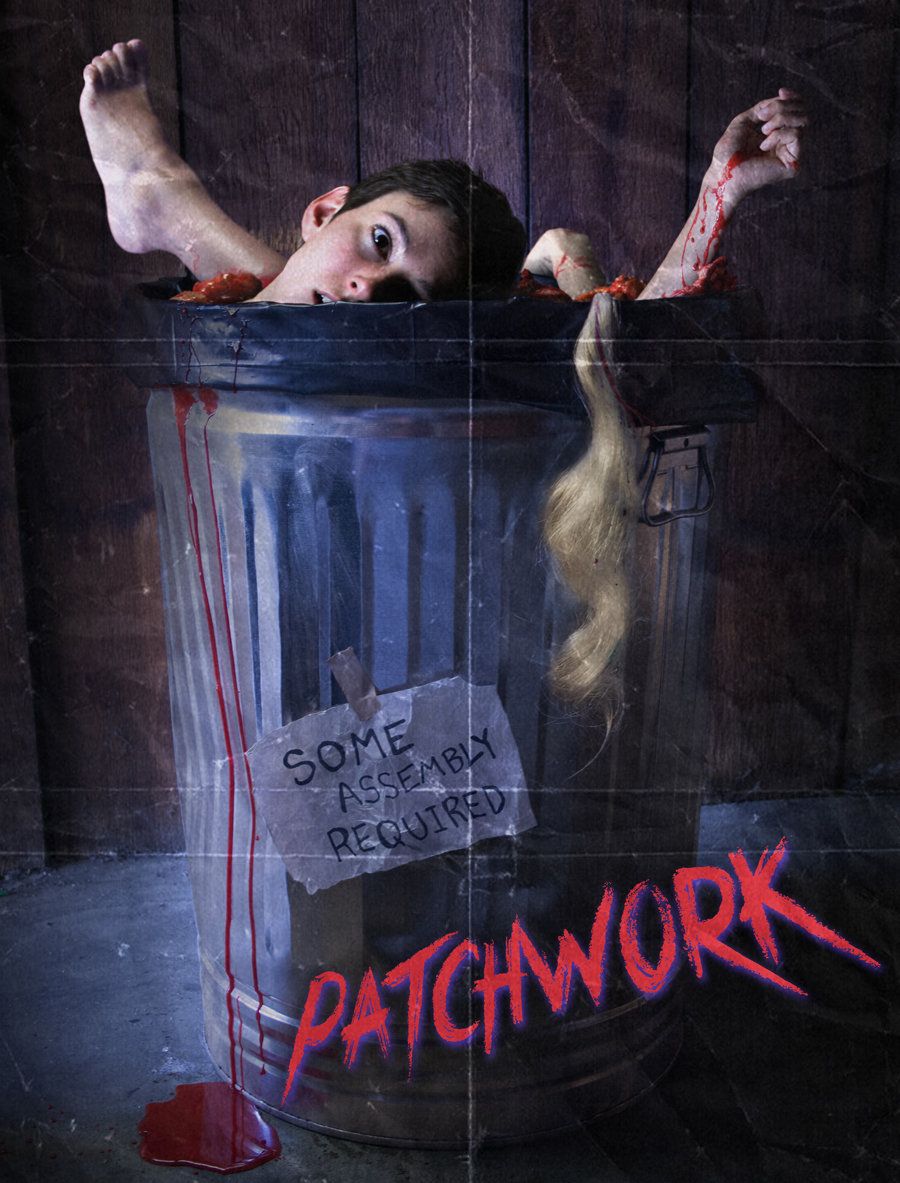
After a mediocre birthday celebration at a pub, Jennifer (Tory Stolper) is attacked at her home. When Jennifer wakes up, she discovers that her body has been stitched together with the corpses of two other women: party girl Ellie and quiet girl Madeleine. The three ladies share a similar sense of self-awareness as well as a thirst for vengeance.
Retracing their steps, the women start on a vengeance mission to discover the scientist who put them in this situation. They escape, puzzled, but the three of them will have to work together to figure out how they became this ‘single gal’ of a different variety. Along the way, they use their newfound power to take deadly vengeance on the various guys who have made their lives a living hell.
Only the nice guy, Garrett (James Phelps), an English medical student who went to college with Jennifer, will eventually win their hearts and minds – but as internal conflicts and a natural tendency for ultraviolence emerge, the three women find it increasingly difficult to live together, and begin to crack at the seams.
The new ‘woman’ wakes up, which is horrible enough to start the comedy. Each of the three has authority over their own physiological functions, but they share a brain and thoughts, as well as some creative internal debates about how to run the body. They also decide on a ‘look’ to hide the fact that they are joined at the hip.
The storyline of the film is divided into eight pieces that alternate between the present trip of the fused beast and flashbacks to the individual women’ backstories. These instances are a touch abrupt and threaten to break the story’s flow, but they aren’t a major issue. Again, the actors do an excellent job of engrossing you and fleshing out their personalities. “Patchwork” was a real joy to watch.
The three ladies’ performances, as well as the whole plot, is outstanding. The humor was mostly spot-on, and the makeup effects were fantastic. While the sadist in me wishes it was a little gorier, the beast still dishes out plenty of brutality. Tyler MacIntyre has altered the Frankenstein story to give us something fresh and entertaining. It’s definitely worth a watch.
Session 9 (2001)

When Brad Anderson’s “Session 9” was published in 2001, critics weren’t sure what to make of it. The film originally failed to connect with fans seeking instant gratification in a slasher flick. However, when viewed today, “Session 9” strikes as particularly relevant in its portrayal of one of the most pressing concerns of our time: toxic masculinity.The story follows a small group of professionals who have been dispatched to an abandoned mental institution.
The men, led by Gordon Fleming, must put aside their personal feuds and rid the asylum of asbestos within a week in order to get a $10,000 bonus. Director Anderson was able to film at the real-life Danvers State Mental Hospital, a decrepit institution that formerly housed over 4000 patients and personnel while pioneering controversial procedures like repressed memory therapy and lobotomization.
The title alludes to nine cassettes discovered by a Gordon team member, which are a series of conversations between a professional psychiatrist and a woman named Mary Hobbes. Gordon is a new father and owner of a small business.
Mary had murdered her family in their sleep as a child, and has since fled into a series of alternative personalities to avoid facing reality. Gordon draws closer to recalling his own sorrow while the psychiatrist team picks at Mary’s repressed memories. Gordon isn’t going insane so much so as he has already gone insane, causing harm to his family in a fit of wrath.
This film’s directing is impressive. It deviates from the conventional, monotonous path that most horror flicks take. It wasn’t flawless, but it did portray something deeper, rather than relying on jump scares and other superficial components to improve the experience. Including vagueness in the storyline left just enough for the viewers to fill in.
The acting in this movie is not the greatest but Peter Mullan handled the role of an individual who was slowly losing himself, as we see him try to keep himself together but he ended up completely losing it. To handle such duality is not a simple task. While this movie tries to illuminate insanity, it still engages the viewers after a point due to the details in it. All in all, it is a refreshing perspective that isn’t common in the horror genre and should be watched.
The Lazarus Effect (2015)
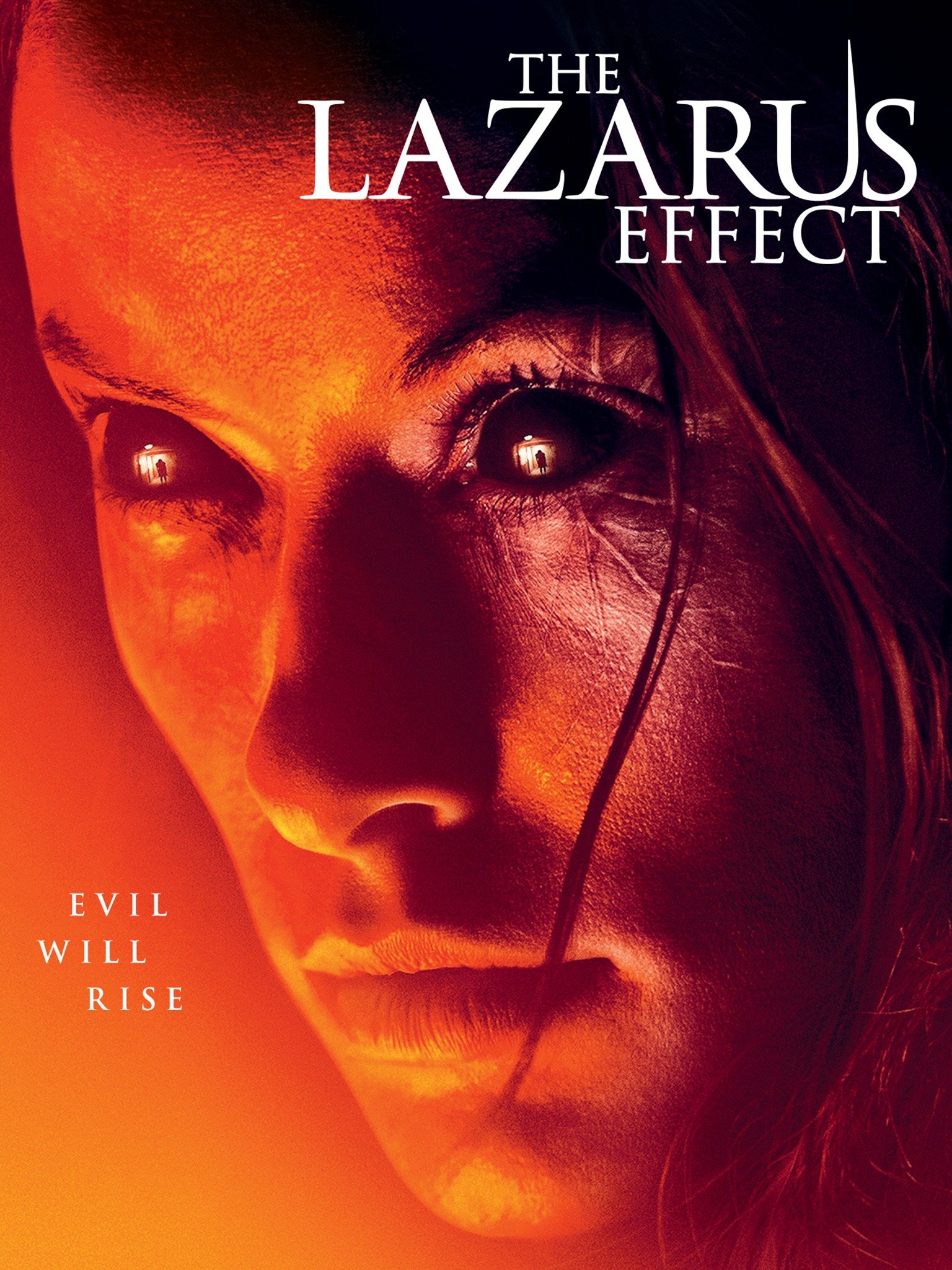
“THE LAZARUS EFFECT” tells the story of a group of scientists led by Frank and his fiancée Zoe who have achieved the unthinkable: raising the dead. After a successful, but unofficial, testing on a recently deceased animal, the team is ready to share their breakthrough with the rest of the world.
When their university’s dean learns of their secret research, their project is abruptly shut down, and their supplies are seized. Frank, Zoe, and their team take matters into their own hands, launching a rogue attempt to replicate their experiment, which goes horribly wrong and results in the tragic death of one of their own, Zoe. Frank urges them to undertake the unthinkable: attempt to resuscitate their first human test subject, driven by horror and anguish.
The film is yet another variation on the old chestnut of haughty scientists who find the key to resurrecting the dead, only to learn, to their surprise, that it is not all that it is built up to be. The risky adventurers this time around are Frank (Mark Duplass) and Zoe (Olivia Wilde), a couple of researchers at a Californian university who are developing a serum that could help revive the dead.
The team consists of—computer ace Niko (Donald Glover), stoner brainiacs Clay and Ava, the cute newcomer who exists solely so that the other characters can explain things at length to her (and the audience). That’s when “The Lazarus Effect” transforms from an intellectual science thriller in which the cast is made to perform in a unique manner in order to breathe life into a full-fledged horror film (into what?).
The performers try their best right away to bring the plot to life. In his depiction of a somewhat nasty geek, Duplass remains intact and genuine, riffing his way through ludicrous expositions and bantering with the very game Wilde. Wilde plays Zoe, from the voice of reason to a demonic hell-beast, and she is by far the most compelling character. Glover and Peters keep too much of their inherent charm in check, while Bolger is forced to play the damsel in distress.
The film’s technical credits vary from pleasing to intense, with the special effects makeup worn by Wilde being particularly noteworthy, and those on both sides of the camera may anticipate this to be a solid career highlight.
Anatomy (2000)
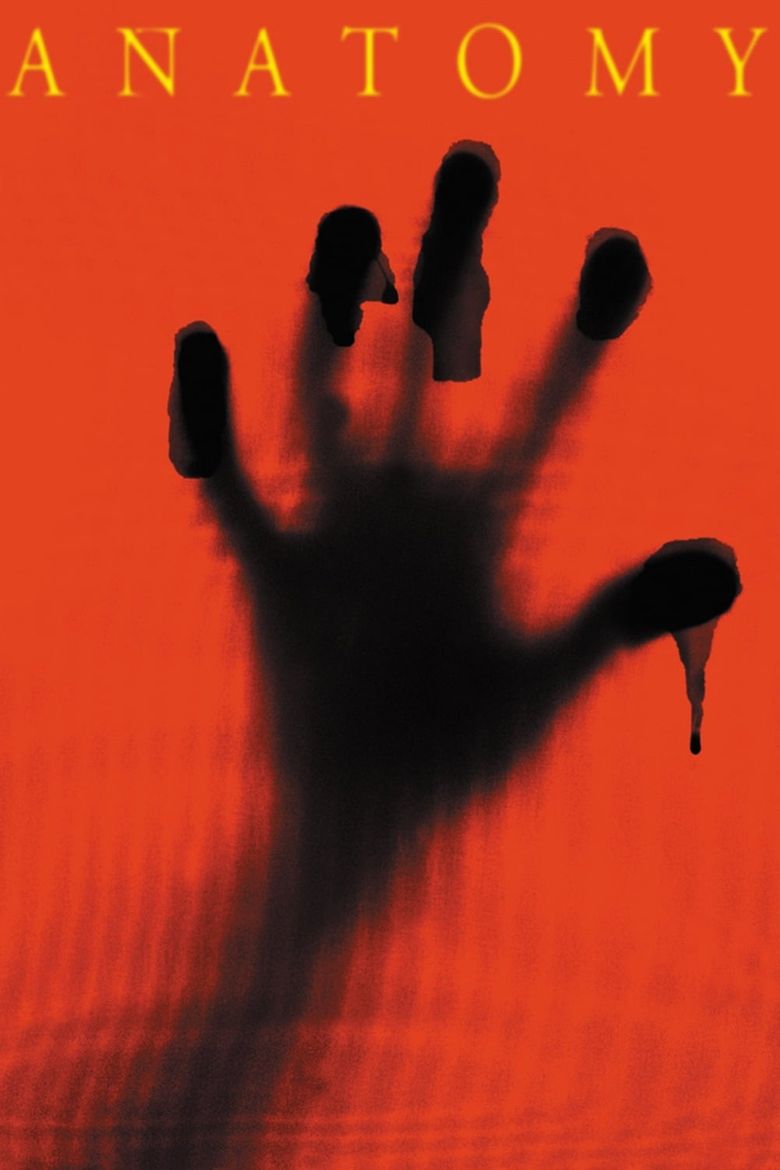
Paula Henning (Franka Potente) is a gifted young surgeon who is studying at one of Germany’s most prestigious institutions, following in her grandfather’s footsteps. When Paula notices that the deaths at the morgue are individuals she knows, she suspects it’s connected to the Anti hippocratics, an old organization of doctors that included Nazi scientist Josef Mengele.
The Anti-Hippocratic Club conducts brutal experiments on living persons deemed undesirable. Paula also comes across material on the rituals they execute on those who break their rules or ask too many questions.
“Anatomy” was one of those memorable flicks that went unnoticed. The picture has a fresh feel to it, and the horror it gives feels like a blend of earlier films and something from the year 2000. The interesting picture has its moments, but it’s not without flaws. The narrative is complex, and the actors make sensible judgments.
Franka Potente is the film’s saving grace in addition to the other elements. She is particularly good here, and is a cut above the rest of the bunch. Everyone complements each other and the story because of the supporting cast’s writing and acting, and the movie reveals the killer quickly, which adds to the unpredictability.
The film is occasionally well-shot, and the overall quality looks to be of comparable level. The picture has a ’80s vibe to it and frequently looks to be set in that era. I enjoy how the bodies are plastinated, but they don’t always seem like genuine dead people.
Given the buzz surrounding the film, you’d be accurate for thinking it’s unique, innovative, or otherwise. However, aside from the occasional laughs and a few engaging performances, everything else about it, from the shots to the pacing, makes it a fairly decent watch and hence is on our list.
The Facility (2012)
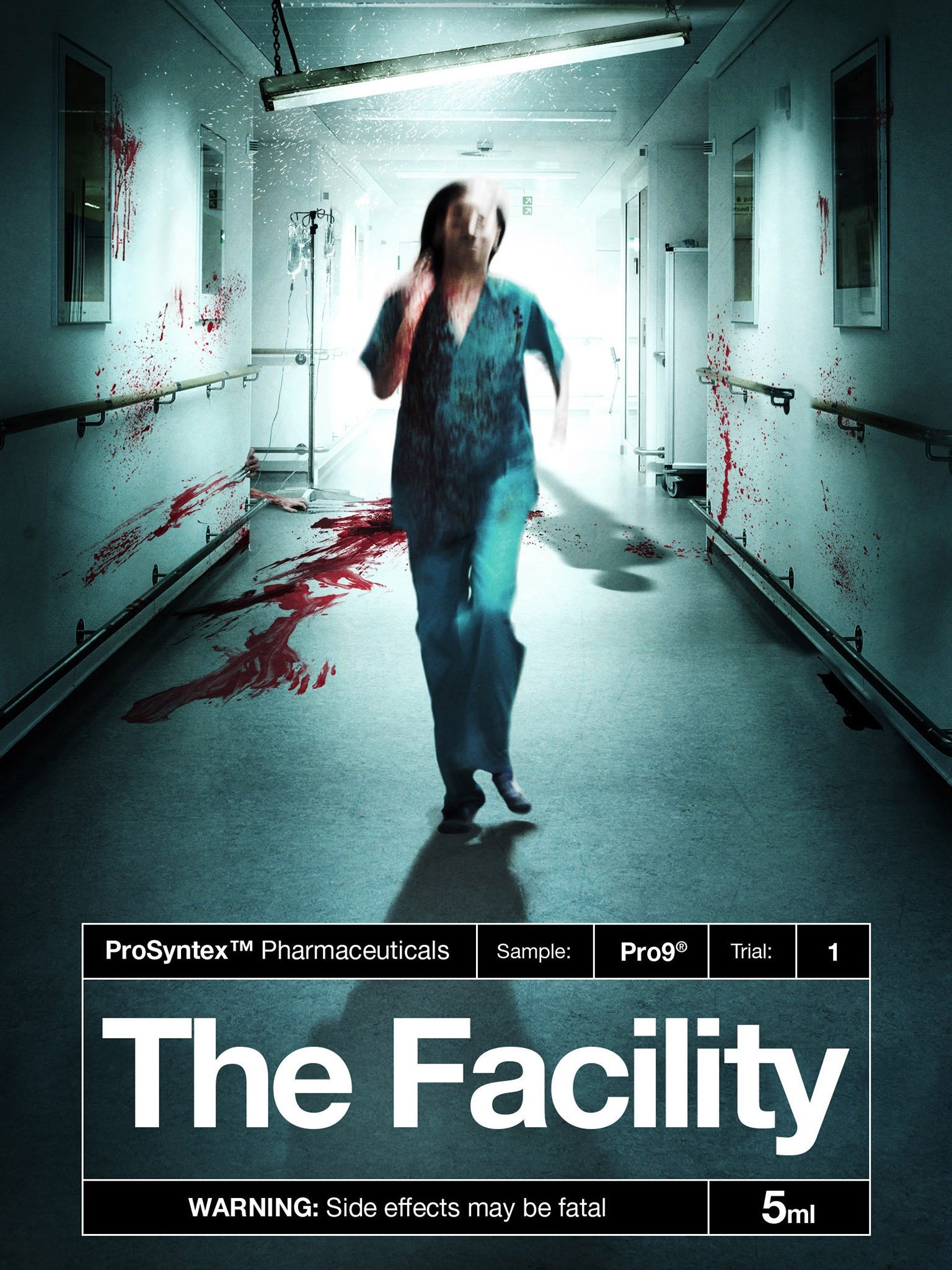
Seven strangers gather at the remote Limebrook Medical Clinic to act as test subjects for Pro9, a novel drug created by a global pharmaceutical company. The fact that they know as little about the drug as they do about each other heightens the suspense, which is heightened by the protagonists’ lack of privacy and access to the outside world.
While seasoned test subject Joni (Alex Reid) bonds with newbie Adam, the rest of the gang struggles to get along with the arrogant Jed (Oliver Coleman), who winds up worrying Arif, and the gang’s oldest member Morty, who keeps everyone on edge with his stories of trials gone wrong.
Scenes are well-presented, however, the majority of the time, unexpected events occur. The test volunteers react to the disease one by one. The patients who have been converted assault the victims, while others retreat and hide. Then, as a result of bad decision-making, everyone suffers unexpected consequences.
Despite the fact that nothing stands in their way, volunteers choose not to leave the institution to seek outside assistance. The idea of splitting to search the building seems like a good one. “The Facility” gradually grows after this point, as it keeps gaining its sense of direction.
The experiment’s requirement for a varied range of guinea pigs explains how popular stereotypes like the arrogant loudmouth, aged veteran, mousy silent girl, bright good guy, and shrewd manipulator came together so easily. The earnest performances of a talented cast make up for the slight lack of depth in the characters’ screenplay. Any film can only go so far with a good look and a strong cast.
In “The Facility,” the capable efforts put in by both sides of the lens are enforced by an idea that runs strongly throughout the movie. The steady camera work, methodical acting approach, and thorough and rehearsed writing add to this and, in turn, heighten the realistic idea, making the audience question what they would do in a similar scenario.
“The Facility” gives the impression of being a solid chiller, and it does the job on multiple occasions. It ultimately feels like a well-strung flick in comparison to the other films of the same genre. Owing to the interesting ending and the fact that the film’s direction was perfectly dealt with, “The Facility” was wonderfully filmed, well-acted, and well-edited, and it’s a proud moment when a terrific project like this is executed in such away.
